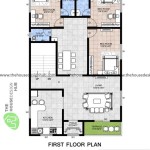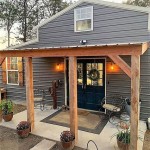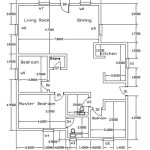How To See the Floor Plan Of Your House
Understanding the layout of a residence is crucial for various purposes, ranging from planning renovations and furniture arrangements to obtaining accurate property valuations and ensuring compliance with building codes. Several methods exist to access or create a floor plan, each with its own advantages and drawbacks depending on the age of the property, the availability of existing documentation, and the desired level of detail.
This article explores the different avenues available to individuals seeking to obtain or generate a floor plan of their house. It will cover where to search for pre-existing plans, how to commission a professional survey, and how to create a floor plan using readily available tools and technologies.
Searching Existing Records and Documentation
The first step in obtaining a floor plan should involve exploring existing records and documentation associated with the property. These records, if available, can provide a significant head start in understanding the layout of the house without the need for creating a new plan from scratch.
A primary source for floor plans includes the original building permits and construction documents. These documents are typically filed with the local city or county planning and building department. Accessing these records may require a visit to the relevant government office or, in some cases, access through an online portal. The availability of online access varies depending on the jurisdiction and the age of the property. When requesting these documents, it's helpful to have the property address or Assessor's Parcel Number (APN) readily available to facilitate the search.
Mortgage lenders and title companies may also possess copies of floor plans as part of their due diligence process during the initial purchase of the property. Although less common, these institutions may retain copies of the original building plans or appraisal documents that include a basic floor plan. Contacting these entities may provide access to existing documentation, potentially saving time and resources.
Another avenue to explore is reviewing any home inspection reports that may have been conducted when the property was purchased. While home inspection reports typically focus on the condition of the house rather than its layout, they may contain schematic diagrams or sketches of the floor plan to illustrate the location of inspected features. These diagrams may not be fully detailed or to scale, but they can provide a general overview of the house's layout.
Finally, for newer homes built within a planned community, the homeowner's association (HOA) may have copies of the original architectural plans for different model types within the development. Contacting the HOA can be a productive step, particularly if the house is a standard model within the community.
Commissioning a Professional Survey and Floor Plan
If existing records are unavailable or incomplete, commissioning a professional survey is the next step in obtaining an accurate floor plan. Licensed surveyors and architects possess the expertise and specialized equipment necessary to measure and document the dimensions of a house, creating a detailed and reliable floor plan.
The process typically begins with the surveyor or architect conducting a site visit to measure the exterior and interior dimensions of the house. They utilize tools such as laser distance measurers, measuring tapes, and levels to precisely record the length, width, and height of each room, as well as the location of walls, doors, windows, and other fixed features. They also note the presence of any architectural details, such as fireplaces, staircases, and built-in cabinets.
Following the site visit, the surveyor or architect will use the gathered measurements to create a floor plan using computer-aided design (CAD) software. The resulting floor plan will typically include accurate room dimensions, wall thicknesses, door and window locations, and the placement of major appliances and fixtures. Some professionals also offer 3D rendering services, which can provide a more realistic visualization of the house's layout and spatial relationships.
When commissioning a professional survey, it's important to clearly communicate the intended use of the floor plan. For example, if the floor plan is needed for renovation purposes, the surveyor or architect should be informed of any specific areas of interest or concerns. This will ensure that the floor plan is tailored to meet the specific needs of the project.
The cost of commissioning a professional survey can vary depending on the size and complexity of the house, the level of detail required, and the geographic location. Obtaining quotes from multiple surveyors and architects is recommended to compare prices and services before making a decision.
In instances where highly detailed and accurate floor plans are needed, laser scanning technology offers an advanced option. Laser scanners capture millions of data points to create a highly detailed 3D model of the interior of the house. This data can then be used to generate accurate floor plans, elevations, and even virtual tours of the property.
Laser scanning is particularly useful for complex or irregularly shaped houses where traditional measurement methods may be less accurate or more time-consuming. However, laser scanning services tend to be more expensive than traditional surveying methods.
Creating a Floor Plan Using DIY Methods and Technologies
For those seeking a more cost-effective approach, numerous DIY methods and technologies are available to create a floor plan. While these methods may not achieve the same level of accuracy as a professional survey, they can provide a reasonable representation of the house's layout for basic planning purposes.
One common DIY method involves manually measuring the dimensions of each room using a measuring tape and sketching the floor plan on paper. This method requires careful attention to detail and accurate measurements. It's essential to double-check measurements and ensure that the overall dimensions of the house are consistent with the individual room measurements.
To improve the accuracy of manual measurements, a laser distance measurer can be used instead of a traditional measuring tape. Laser distance measurers provide quick and accurate measurements of distances up to several hundred feet. These devices can significantly reduce the time and effort required to measure a house manually.
Several smartphone apps are available that can assist in creating floor plans. These apps typically use the device's camera and sensors to estimate room dimensions and generate a basic floor plan. Some apps also allow users to add notes, labels, and photos to the floor plan.
While smartphone-based floor plan apps can be convenient, it's important to be aware of their limitations. The accuracy of these apps can be affected by factors such as lighting conditions, camera angle, and sensor calibration. It's recommended to verify the app's measurements with manual measurements to ensure accuracy.
Another option for creating a floor plan is to use online floor plan software. These software programs offer a range of tools and features for drawing floor plans, including pre-designed shapes and symbols for walls, doors, windows, and furniture. Online floor plan software often provides the option to create 2D or 3D floor plans, allowing for a more realistic visualization of the house's layout.
Some online floor plan software programs are free to use, while others require a subscription or one-time purchase. The features and capabilities of these programs vary, so it's important to research and choose a program that meets the specific needs of the project.
Regardless of the chosen DIY method, it's important to remember that the accuracy of the resulting floor plan will depend on the accuracy of the measurements and the care taken in creating the plan. It's always recommended to verify the floor plan with physical measurements and to consult with a professional if precise dimensions are required for critical applications such as construction or renovation projects.
For example, software like Magicplan allows users to create floor plans by simply walking through the home and using the device's camera to scan the rooms. The app then generates a floor plan based on the scanned data. While convenient, it's vital to remember that such technology has inherent limitations in precision, especially in challenging lighting conditions or when capturing complex architectural features. Calibration and verification with manual measurements are always recommended.
Ultimately, the method chosen to obtain a floor plan depends on individual needs, budget, and the desired level of accuracy. Exploring existing records is the most cost-effective starting point. If existing records are unavailable or insufficient, commissioning a professional survey provides the most accurate and reliable result. DIY methods offer a viable alternative for basic planning purposes, but they require careful attention to detail and verification to ensure accuracy.

10 Ways To Find The Floor Plan Of A House

How To Find Floor Plans Blue Prints Of Your House

9 Ways To Find Floor Plans Of An Existing House Archid

How To Find Floor Plans Blue Prints Of Your House

Create House Plans All In One Roomsketcher

Designing My Own House

How We Work Detailed Floor Plan Drawings

Playing Architect With Floorplanner Making 2d House Plans Young Love

Exciting House News A Change In Floor Plans Addicted 2 Decorating
More Like Home Diy Floor Plan Art And How To Find Unique That You Love
Related Posts








